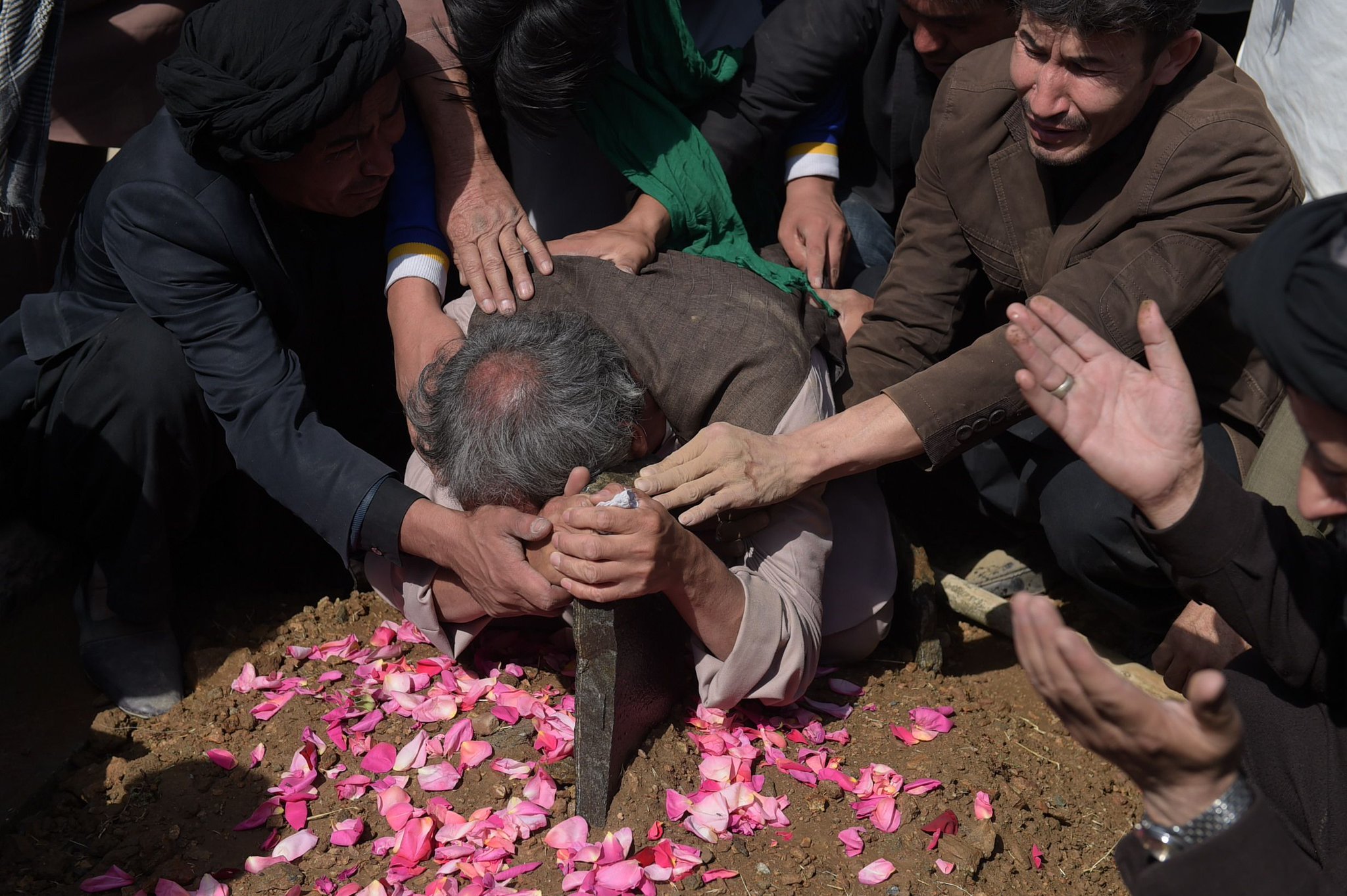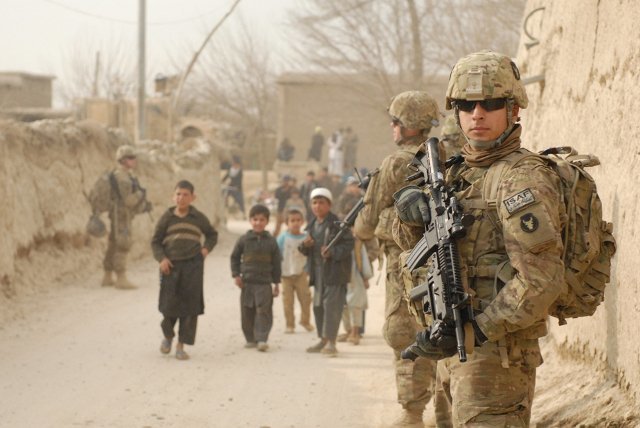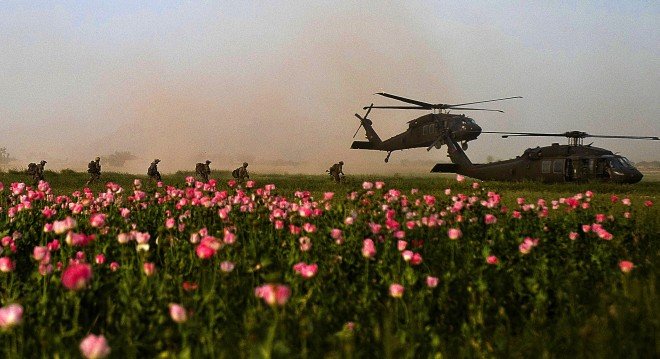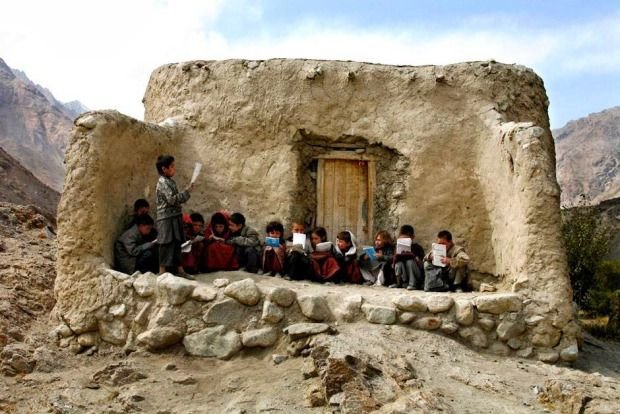While the consensus in the mainstream media these days is that the Russians cause suffering wherever they set foot, the USSR actually helped build infrastructure (such as universities and dams) in the country before the Mujahideen started to emerge. The Soviets were forced to leave, and the country was left with a growing cancer that was intentionally induced by the West. As current US presidential candidate, Hillary Clinton, said during an On The Record interview that took place on July 19, 2010:
When the Soviet Union invaded Afghanistan we had this brilliant idea that we were going to come to Pakistan and create a force of Mujahideen and equip them with Stinger missiles and everything else to go after the Soviets inside Afghanistan.Those words alone make it clear that the fate of the Afghan population was never a concern, their mission was to get the Russians out of an area that is of geopolitical interest to Clinton and her Western warmongering colleagues.
And we were successful. The Soviets left Afghanistan, and then we said; "great, good-bye!", leaving these trained people, who were fanatical, in Afghanistan and Pakistan, leaving them well-armed, creating a mess, frankly, that at the time we didn't really recognize, we were just so happy to see the Soviet Union fall and we thought "fine, we are OK now everything is going to be so much better".
Now you look back. The people we are fighting today, [al-qaeda] we were supporting in the fight against the Soviets.
The mess that they 'mistakenly' created is one that serves their agenda well, because the US never truly left Afghanistan. To this day, the US has rooted itself all over the country and is in charge of most, if not all, military operations under the pretext that Afghanistan would be lost without them and that the situation would worsen if all troops were to be withdrawn. (That's right, Obama's "you can take that to the bank" promise to bring the troops home from Afghanistan was a lie.) A mere glimpse at the results from their 15 year occupation and the conclusion is that the Afghan population would be far better off without US 'assistance'.
'Oops, We've Done It Again and Again', Violence Against Civilians by the US Army
In an article (entitled 'The Kill Team: How U.S. Soldiers in Afghanistan Murdered Innocent Civilians') published by Rolling Stone, author Mark Boal lays out the gruesome details of how a group of clearly ponerized US soldiers started plotting to kill and killing innocent Afghan civilians for sport in Kandahar, southern Afghanistan, where they were based. The group's known victims were: Gul Mudin, age 15; Marach Agha, age 22; and Mullah Allah Dad, age 45. The soldiers took pictures of themselves celebrating their kills, while others collected fingers of their victims as a trophy. As expected, once the murders were revealed within the particular military unit and beyond, the matter was shoved under the rug:
"Even before the war crimes became public, the Pentagon went to extraordinary measures to suppress the photos - an effort that reached the highest levels of both governments. [...] The message was clear: What happens in Afghanistan stays in Afghanistan."It is chilling to know that individuals in such positions can so easily kill civilians, the very people they claim to be protecting. But as WSWS author Joanne Laurier states: "Atrocities such as those carried out by the "Kill Team" have long been employed in counterinsurgency operations by the US and other imperialist powers to "pacify" populations that resist occupation, from India to Kenya, Ethiopia to Angola, Algeria to Vietnam. The US military provides the training and weaponry with which its soldiers maim and kill. The drive by the American ruling elite to dominate the globe creates the conditions where individual psychosis and sadism must flourish."
With such a lack of regulation and serious psychological screening for army personnel, we can only wonder how many other brave US soldiers have committed similar atrocities and have gotten away with it. What we do know is that there have been countless US war crimes in Afghanistan that have gone unpunished, such as deadly airstrikes that, overall, have claimed thousands of innocent lives.
In 2015, the Bureau of Investigative Journalism reported that there have been around 600 drone strikes that together killed more than 2,000 people. In a report published in February this year, the Bureau states: "The rate at which civilians are being killed by US airstrikes in Afghanistan is at its highest point since 2008." The UN reported that: One in every four casualties was a child, and one in ten a woman. In October last year, 'The Drone Papers' revealed that, in general "nearly 90 percent of people killed in [US] airstrikes were not the intended targets" over one five-month period.
To name just three fairly recent examples; on 3 Oct 2015, a US airstrike hit a hospital in Kunduz, killing at least 50 doctors, patients and civilians, and leaving 400 wounded; on 12 Aug 2016 a US airstrike hit a house in Minari, leaving 20 civilians dead; on 28 Sept 2016 a US airstrike hit a private residence in Achin, 15 civilians were killed.
The US response to any of these 'Oopsy-Daisy' mistakes is: (a) Taliban were hiding there (b) Afghan forces called for air support. (c) Our deepest condolences, the attack was a profound tragedy. Whatever their reasoning and regardless of the amount of 'apologies', the facts are clear: airstrikes continue to kill innocent civilians. Why? Firstly, it is to simply create more chaos and instability in the country, the goal after all was never to liberate the people of Afghanistan, but rather to oppress and contain the country through 'controlled chaos'. Second, US military technology and coordination is ridiculously imprecise. Drone operators, for example, have great difficulty discerning what they're seeing on the screen (see Behind the Headlines: Kill Chain: America's drone warfare - Mindless mayhem or 'strategy of terror'?).
Leaving?! But Someone Has To Keep An Eye On The Poppies
It's almost common knowledge that poppy cultivation increased significantly after the US invasion. Since 2002, most of the world's heroin comes from Afghanistan. John Sopko, the Special Inspector General for Afghanistan Reconstruction (SIGAR) has said that "roughly 500,000 acres, or about 780 square miles, is devoted to growing opium poppy". As he notes, that's equal to more than 400,000 US football fields.
Despite the fact that US and other western nations claim they have funded campaigns to eradicate poppy crops (the US invested $7.5 billion), poppy farming in Afghanistan continues to increase. Any 'results' that are reported regarding crop eradication are minimal, to say the least. For example, the 'Afghanistan Opium Survey 2014: Cultivation and Production' by the United Nations Office on Drugs and Crime, and the Islamic Republic of Afghanistan Ministry of Counter Narcotics, reported the following:
In the Eastern region, cultivation decreased in Kunar, Laghman and Kapisa provinces by 33%, 27% and 19%, respectively, but increased in Nangarahar province by 16%. Cultivation in Nangahar again reached the level it had before becoming poppy-free in 2007. Only 34 hectares of opium poppy cultivation were eradicated in Nangarhar province in 2014.Note that there is a slight decrease here, and then a slight increase there, when one province achieves poppy-free status, another province loses it. It is pretty clear that this is nothing but a smokescreen to maintain the illusion that the US and Western countries are fighting a war on the drug trade.
In the North-Eastern region, Badakhshan saw a 77% increase in opium poppy cultivation, from 2,374 hectares in 2013 to 4,204 hectares in 2014. This happened despite the eradication of 1,411 hectares of opium poppy in 2014.
In the Northern region, Balkh province regained its poppy-free status. However, Sari Pul province lost its poppy-free status, though its level of cultivation remained very low. Opium cultivation in Baghlan province increased by 19%, to 168 hectares in 2014 from 141 hectares in 2013. (p.13)
According to Iranian police officials, drug production in Afghanistan has increased 40 fold since the 2001 US invasion, and the Iranian Interior Minister Abdolreza Rahmani Fazli said during a meeting with governors of Iranian and Afghan border provinces that "western countries earn $50bln to $60bln from drug trafficking". The money gained by the cultivation is most probably, as many have speculated, used to finance CIA operations, which makes it favorable for the US to keep Afghanistan as its very own Opium Factory.
One among the many negative results of this US-built heroin factory is a massive increase of heroin users in Afghanistan. The SIGAR reported that since 2005, the number of users (including women and children) has increased 10 fold (shades of the British 'opium wars' against China in the mid-19th Century). Meanwhile in the US, heroin use and heroin-related overdose deaths have increased likewise, The Center for Disease Control writes: "Between 2002 and 2014, the rate of heroin-related overdose deaths more than quadrupled, and more than 10,500 people died in 2014." In addition, heroin use more than doubled among young adults aged 18-25 in the past decade. To some people in Western nations, what happens abroad is none of their concern, but it is a mistake to think that the effects of the actions of Western warmongering regimes abroad will not affect the lives of Western adults and those of their children. But I digress.
Peace and Freedom Can Never Prevail Under US Rule, But Might Develop With Help From Russia, China, Iran
On October 7, 2001, former US President George W. Bush announced to the world that strikes against al-Qaeda and the Taliban have begun. He ended his presidential address with: "the battle is now joined on many fronts. We will not waver; we will not tire; we will not falter; and we will not fail. Peace and freedom will prevail."
Many years later,
- the Taliban control at least half the country and their power is expanding.
- the unemployment rate has jumped to 40 percent in Afghanistan in 2015, a 15 percent increase
- at least a quarter of Afghan children between ages 5 and 14 work for a living or to help their families
- 90 percent of women and 63 percent of men cannot read and do not have an education, as reported by Afghan Women's Writing Project in 2013
- sexual and domestic violence against women increased as reported by United Nations Human Rights Office of the High Commissioner and United Nations Assistance Mission in Afghanistan in 2009
- Afghanistan is one of the poorest countries in the world (GDP per capita: $2,051) despite possessing large gas and oil wealth and $trillions in mineral wealth. It is now said to be the third most corrupt country in the world
Just as the Afghan population was not a concern when the US government piggybacked the Mujahideen into Afghanistan, the people were not a concern when NATO invaded and occupied their country. As SOTT editor Joe Quinn stated in a recent article, the real agenda has been:
In addition to access to oil and gas, the invasion and (ongoing) occupation of Afghanistan was designed to place a strategic US military chess piece on the board, right between China and Iran, and between Russia (including the Central Asian 'stans') and Pakistan and India, and thus access to the Indian Ocean and shipping routes to Asia. Afghanistan is also right along the route of one of several planned 'silk roads' that would be used to transport energy resources and commodities across Eurasia and 'knit' the continent's countries together in a de facto economic and political alliance.It is very difficult for me, and I think for probably many, to see any hope for improvement for Afghanistan and its people. But there are a few countries whose helping hand might give hope for the future:
So the heavy US military presence in both Iraq and Afghanistan projected US power directly into two very strategic positions on the global 'chess board' with the intent of supplanting Russia/China-led and dominated Eurasian integration.
- Russia: Zamir Kabulov, the Russian President's special envoy for Afghanistan, stated that Russia "consistently lends comprehensive assistance" to the existential security problems. In January this year, Russia delivered 10,000 AK-47 assault rifles to the Afghan army along with accompanying ammunition, and in November last year delivered 57 KAMAZ trucks, worth $2.5 million - free of charge. In addition, Afghanistan has shown interest in July this year to enhance its cooperation with Russia against terrorism. Afghan National Security Adviser Hanif Atmar told Sputnik: "The reason I am here is to ask Russia for help [fight Islamic State]. Russian help was extremely helpful and effective [in fighting terrorism]."
- Iran: In early September this year, the Afghan Foreign Minister discussed closer security cooperation and a joint fight against terrorism with Iran. Its western neighbor has also helped with fighting drug trafficking. And there is a sea port in the making: "Iran appears to be following the Russian and Chinese example with a planned sea port in Chabahar (in partnership with India) on Iran's Arabian sea coast that would not only facilitate shipping of Iran's vast energy resources to India and Asia, but provide a corridor to the sea for Afghanistan to exploit the $trillions in minerals coveted (and currently illegally claimed) by the USA."
- China: Afghanistan along with Pakistan and Tajikistan have joined China in a military alliance against terrorists. The alliance, known as the Quadrilateral Cooperation and Coordination Mechanism, was announced in early August this year. There are also plans to construct the New Silk Road by China that will allow "trains to travel from China's city of Kashgar to the Afghan city of Herat, and then connect to Iran after crossing Kyrgyzstan and Tajikistan. Access to Iran's various seaports would ensure that Afghanistan could begin exporting at a much higher rate."







I get it, no matter who else doesn't...!